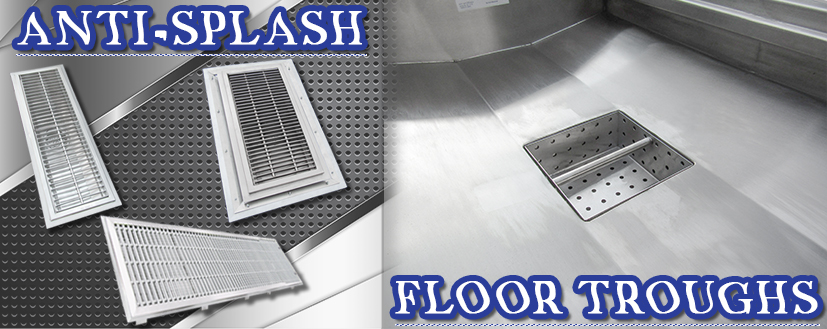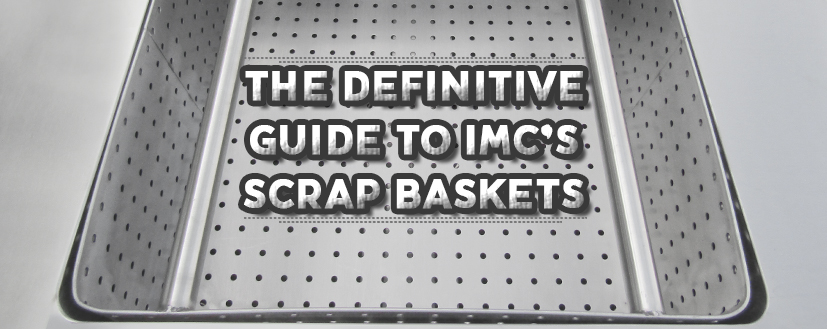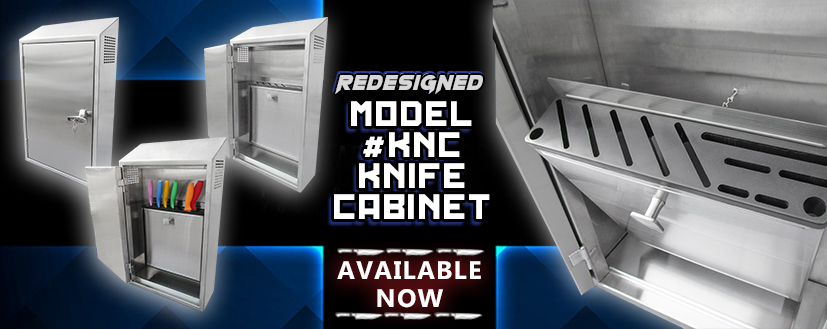Why Do Restaurants Use Stainless Steel?

About Kitchenall
Kitchenall is a leading Brooklyn, New York based distributor of new commercial restaurant equipment, specializing in commercial cooking equipment, commercial refrigeration, & display refrigeration for restaurants, bakeries, delis & cafes. Check out their extensive selection of commercial foodservice equipment at www.kitchenall.com.
About the Writer

Denisse Lumbano is Kitchenall’s Project Manager. Denisse is a well-versed English & Spanish writer & transcriber of innovation-related content. She is a passionate copywriter at heart who enjoys participating in various projects related to innovation, trendy topics & creating material that reaches an audience that will appreciate it. Check out Denisse’s LinkedIn here: https://bit.ly/3y1AXUg
In the culinary world, stainless steel reigns supreme. Chefs love its versatility and the way it can be used to create everything from simple dishes to masterpieces. But why is stainless steel so popular in restaurants? Let’s take a look at some of the reasons restaurants prefer stainless steel.

Stainless Steel Is A Durable Material That Can Withstand Heavy Use
Restaurant equipment is constantly being used and abused. It needs to be able to withstand heavy use. That’s why stainless steel is such a popular material for restaurant equipment. It’s durable and can withstand a lot of wear and tear. Stainless steel will last for years with proper care. Restaurant equipment made from stainless steel is an investment that will pay off in the long run.

Stainless Steel Is More Hygienic
Restaurant equipment is often made of stainless steel because it doesn’t corrode or rust. This makes it a good choice for kitchens and restaurants, where there is a lot of moisture in the air. Rust is a type of metal oxide that forms when iron or steel is exposed to oxygen and moisture. While it may not seem like a big deal, rust can be quite unsanitary. This is because it can provide a perfect environment for bacteria to grow.
Over time, the oxygen and moisture combine to form oxides on the surface of the metal, which can then flake off in the form of rust. While most people think of rust as being nothing more than a cosmetic issue, it can pose a serious threat to food safety. If rust particles come into contact with food, they can contaminate it with harmful bacteria. Rust can also cause metal utensils to break down, releasing small metal fragments into food. In addition, rust can leach harmful chemicals into food, which can potentially cause poisoning. As a result, it is important to take steps to prevent rust from forming in the kitchen and to properly clean any surfaces that have become contaminated.
For these reasons, it’s essential to keep rust out of the kitchen. This means regularly wiping surfaces with rust-resistant cleaners and using protective coatings on metal surfaces. By taking these precautions, you can help keep your kitchen clean and safe from harmful bacteria. But overall, stainless steel is a great choice for restaurant equipment because of its ease of maintenance and hygiene levels.

It Has A Sleek, Modern Look That Many People Find Appealing
Restaurant kitchen equipment, especially commercial restaurant kitchen equipment, is designed to help restaurant chefs and cooks prepare meals quickly and efficiently. Restaurant equipment should also have a sleek, modern look that many people find appealing. Some of the most popular restaurant kitchen equipment includes ovens, ranges, fryers, hoods, and dishwashers. Out with the old, in with the new!
If your restaurant is still stuck in the past by basing its design on classic looks, then it’s time for a change. One way to do so is by switching over to using stainless steel for almost everything. Not to mention, your customers will be impressed by how up-to-date your establishment looks. Give your restaurant a much-needed facelift by using stainless steel in your design. Your business will thank you for it!

It’s Easy To Clean And Doesn’t Show Fingerprints Or Smudges
When choosing the right material for your commercial kitchen, there are many factors to consider. But one of the most important considerations is how easy the material is to clean. You want a surface that won’t show fingerprints or smudges, and that can be easily wiped down.
While working in the kitchen, greasy hands are inevitable and so is touching surface either consciously or subconsciously. The greased fingerprints are left embedded on the surface. It can create a bacteria breeding ground, which through touching, can be transferred to the food resulting in contamination.
One of the best things about stainless steel appliances and surfaces is how easily they keep clean. Unlike other materials, stainless steel doesn’t show fingerprints or smudges, so you can always have a clean surface. And if something does manage to get on the surface, it’s easy to wipe off with a soft cloth. Stainless steel is known for its power to resist significant scratches and scuffs. As long as you keep it clean, your stainless steel appliances will always look new.

It’s Affordable And Can Be Used In Any Type Of Kitchen Design
Today, more and more commercial restaurants are opting for stainless steel appliances in their kitchens. There are many reasons for this trend, but one of the most important is that stainless steel is an affordable option. Unlike other materials, such as different types of granite or marble, stainless steel is relatively inexpensive. This makes it an excellent choice for those who are looking to update their kitchen on a budget.
With stainless steel, one gets affordability without compromising on the look since it has a modern look that can match any kitchen décor. When prioritizing a modern outlook for a commercial kitchen, it’s advisable to consider a material like stainless steel.
When it comes to installation, stainless steel is generally more expensive than iron and copper. However, while initial costs may be higher, stainless steel is often a more durable and long-lasting option, which means that it can ultimately save you money in the long run.
In Conclusion
Stainless steel is a great choice for restaurants because it’s durable, easy to clean, and affordable. It doesn’t corrode or rust, making it the perfect material for kitchens and restaurants. Plus, its sleek, modern look is appealing to many people. For a restaurant owner looking for an upgrade to the commercial kitchen, stainless steel is the perfect option.





Your article did not discuss the various grades & gauges (thickness) of s/s to explain the advantages/disadvantages of the different types of s/s for different applications. These are important considerations when purchasing restaurant equipment since they affect purchase cost, durability and equipment life-cycle issues. There are many grades & gauges of s/s used by manufacturers of foodservice/restaurant equipment. Gauge measures the thickness of the s/s – the lower the number the thicker the s/s. 18 gauge is approximately 1/20th of an inch (0.05″) thick; 16 gauge is about 1/16th of an inch (0.06″) thick. Most common type of s/s is the 304 grade s/s alloy w/ 18% Chromium & 8% Nickel added to the iron for durability & corrosion resistance; also it is non-magnetic. It is used @ gauges 14-18 thick for worktables, dishtables, equipment stands, etc. Cooking equipment (ranges, fryers, griddles may use thinner gauge (18-22) 304 s/s for non-food contact surfaces (doors, sides/backs, etc.).
However for food contact surfaces (fryer pots, soup cooker/warmers) a heavier gauge more durable 304 s/s is usually used. Heavy duty electric or gas-fired steam kettles, tilt skillets, etc. may use 316 grade s/s as it is more resistant to corrosion due to the addition of about 3% Molybdenum. 430 grade s/s is cheaper, has iron w/ 16-17% Chromium (no nickel) is less corrosion resistant & is magnetic. An easy way to check if the steel used in your equipment is 304 or 430 grade is to put an ordinary magnet on the item – it will not stick to 304 (or 316) grade s/s – it will stick to 430 grade s/s. Because of cost factors 430 grade s/s (@ various gauges) is often used by commercial foodservice equipment manufacturers (domestic & importers – especially Chinese & SE Asian companies – to offer items such as refrigerators/freezers, etc. @ lower cost price points to gain market share. 430 s/s @ 18-22 gauge can be an effective cost saving choice for s/s sheet metal items such as kitchen exhaust hoods, condensate hoods & wall coverings & cooking equipment wall back splashes if there is little chance of contact w/ corrosive acids or high pH items.
As with most things in life – you get what you pay for – lower quality materials & workmanship usually result in greater long term problems & costs.
Recently, I heard that one of my cousins is interested in starting a food business this fall. I liked what you explained about using stainless steel equipment for its rust-free features, and I think my cousin will do too. Thank you for the advice on keeping rust out of a kitchen to prevent unsanitary conditions.